Alcaraz vs Musetti: Monte Carlo Final Recap
forehands — Susan Sontag — drop shots — tactical adjustments
Carlos Alcaraz defeated Lorenzo Musetti 3/6 6/1 6/0 in the final of the Monte Carlo Rolex Masters on Sunday to claim his second title of the season (Rotterdam). The win also ensures Alcaraz returns to world number 2 on Monday, overtaking Alexander Zverev.
First Set
While Musetti and Alcaraz were seeded 13th and 2nd respectively, it’s hard to look at the draw and not think that these were the two best clay courters based on current form (shoutout to Arthur Fils though). Musetti’s career is trending in that Berrettini direction where his clay and grass results far outstrip his hardcourt efforts. His game is so different to your typical modern player: one-hander, parabolic shot shape, brilliant slicer, end-range flair. A new age Gasquet might be appropriate. For Alcaraz, the clay season came at a good time: he was in a mini-slump of sorts, and finding dirt breathed life back into his drop shot and imagination.
In the opening points Alcaraz looked to play into the Italian’s heavier forehand in a bid to open up the court for attacks into the Italian’s one-hander:
While the Italian is one of the most gifted and creative players on tour, his western forehand grip, flexed wrist, and outside setup — where the racquet head is level with the hands and pointing to the side fence — creates a swing that is neither well prepared to handle pace nor generate it at elite levels.
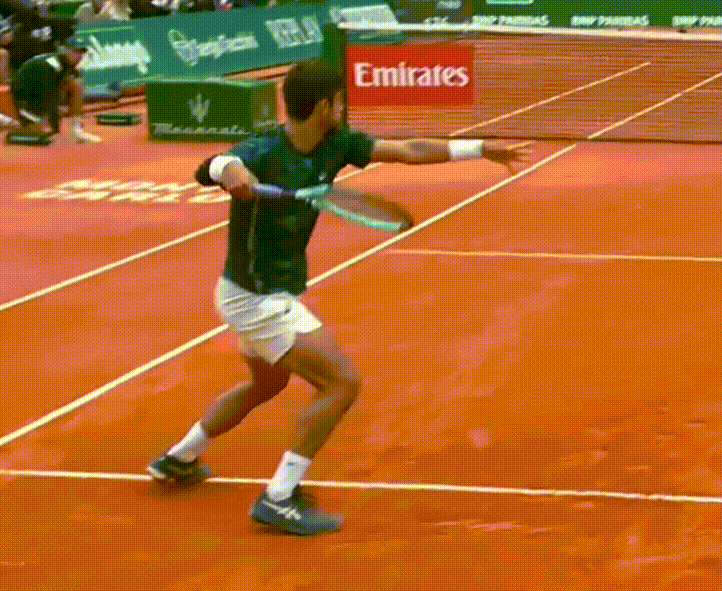
Again, these differences reveal themselves in shot data: Alcaraz’s forehand averaged 128km/h in 2024, which is 2km faster than Musetti’s, and he averaged over 3200 rpm, compared to Musetti’s 2950. More racquet speed = more ball speed and spin options.

And despite the myriad of other factors that influence consistency and attacking ability (movement, tactics and court position, other shots, confidence, surface selection, opponent strength, etc.) when we look at an ‘elite’ crop of forehand players from Tennis Insights 2024 data (being the red line I crudely drew through the best players), and a more middle-of-the-road pack in green, we get some familiar swing styles bunching around each.
Red: Djokovic, Nadal, Ruud, Tsitsipas, Sinner, Cerundolo, Rublev, Alcaraz, Fonseca
Green: Zverev, Khachanov, Musetti, Paul, Hurkacz
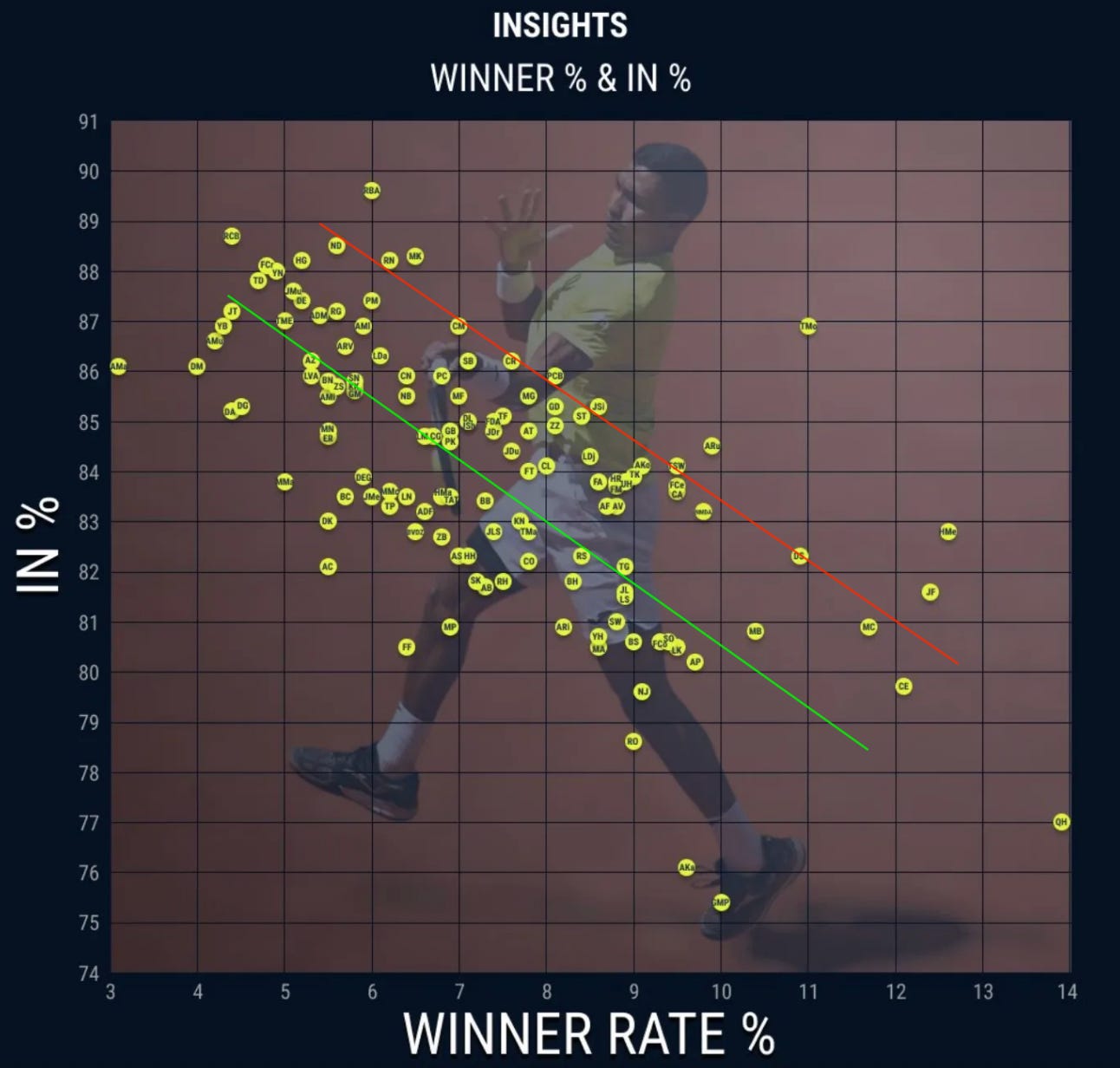
This fascinates me (and was the genesis of this newsletter) because wrist positions and racquet positions are rarely treated as technical fundamentals. They’re usually filed under style, not structure. After all, if your footwork, leg drive, hips, and torso are responsible for 99% of the outcome, that should be the focus as a coach. But if we take a Sontagian view, I keep seeing over and over again that certain swing ‘styles’, that is, wrist and racquet positions, consistently cluster around elite performance metrics, like those on Tennis Insights. It’s as if these positions aren’t merely aesthetic preferences, but expressions of an underlying form (on an unconscious level) that makes the kinetic chain quieter and faster. And it’s almost like style doesn’t matter right up until it does. In other words, once you’re top 20 in the world.
But I’ve gone off track here.
Alcaraz would break in the opening game, and in his first service game he again targeted the Musetti forehand on first-serves.
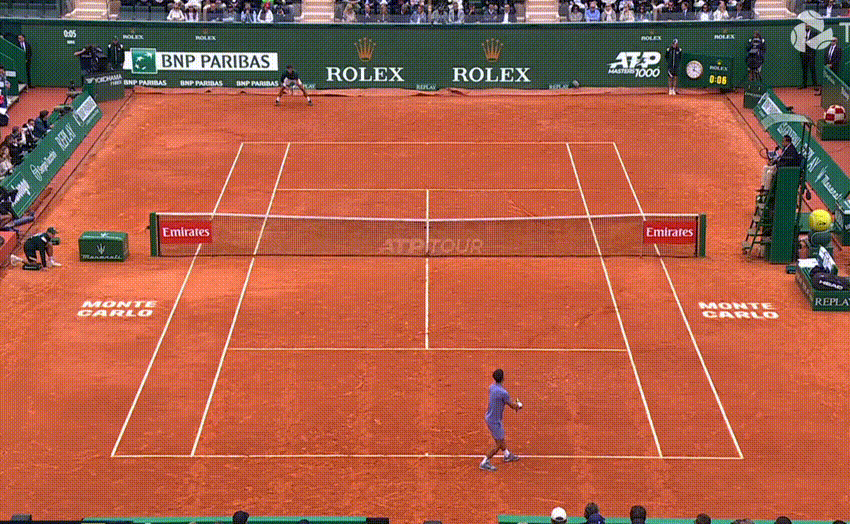
However, Monte Carlo is one of the slowest surfaces on tour, and it is perfect for Musetti’s deep and parabolic brand of baseline variation, where he can buy enough time to thread high-flighted rally balls, like here where he pushed Alcaraz deep into Rolex green.
There was also some loose play from Alcaraz in this game: a double fault, poor serving accuracy on a serve-and-volley attempt, and some errant forehands all contributed to a Musetti break point. So of course, Alcaraz doubled down on his syncopated style, pulling out his first forehand drop shot of the match—a gutsy change-up that Musetti did well to track down:
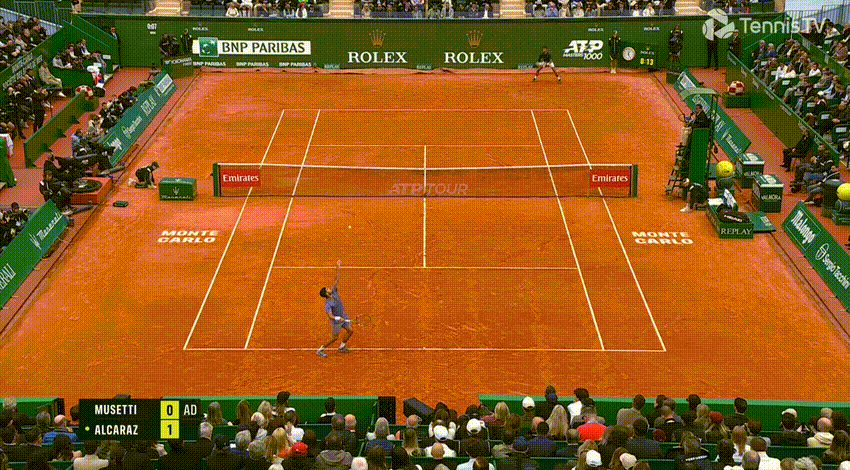
The Spaniard should be forgiven. He had gone 35/41 when attempting the drop shot this week. That is an outrageous conversion, and one to keep an eye on this clay season, where he can use it to more liberally.
Alcaraz played another loose service game at 1-2 to gift Musetti another break of serve. The forehand misfired repeatedly.
“It’s such a fine line, isn’t it? Because we could be sitting here and he [Alcaraz] hits it two inches the other way and it’s a winner, and we are all saying what an unbelievable shot. That’s very much the path he treads.”
— Tennis TV
Down the other end of the court, Musetti committed only one unforced error through the first five games as he built up a 4-1 lead, much to the delight of the pro-Musetti crowd, given the Principality’s proximity to the Italian border. And it wasn’t that he was playing conservatively:
At 4-2 they played an exceptional point that Alcaraz won, but Musetti found some big serves and some heavy groundstrokes on the next point, and followed that up with more good serving:
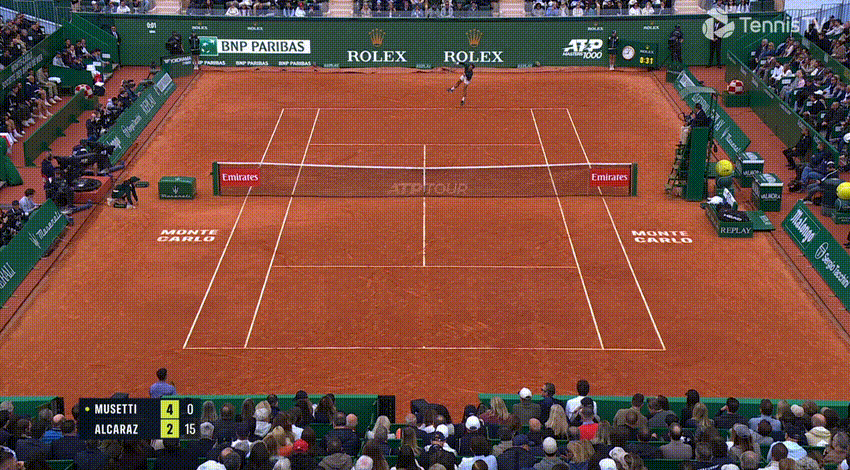
Both held and at 5-3 Alcaraz made a push to get back in the set, but Musetti was clean on serve, and I love the variation he can employ on his backhand wing, threading spins and flights that, coupled with his court speed and end-range craft, tempts opponents into red-lining too much. Again, the Alcaraz forehand misfired:
“You can see how effective the slice is when he is pushed into those uncomfortable positions, in terms of neutralising it. Not allowing Alcaraz the opportunities to have an easy ball to take on.”
— Tennis TV
And on set point Musetti executed one of the most audacious and brilliant drop shots I can remember. So Italian.
A great start for Musetti, but if anything this was business as usual for Alcaraz, who had made a habit of treating the first set as range practice this week.
Second Set
Alcaraz got out to a 2-0 lead in the second. The broadcasters had mentioned that Alcaraz was returning around metre deeper today against Musetti than in prior rounds, and in the first return game of the second Alcaraz played further up, ripping a forehand on his first break point to go up 2-0.
That was a good change up. Musetti was too comfortable having more time with Alcaraz’s deep return position, as he is adept at playing high and heavy off his back foot from deep regions. He wants you to engage in an old-school clay battle, and as good as Alcaraz can play that game, it was in his interests to rush the Italian, even on slow clay.
“I think obviously what is very apparent is that the ball is back on Musetti a little bit quicker. He’s not quite got the time to set up his plus-one that he had earlier on in this match.”
— Tennis TV
After Alcaraz’s Miami loss to Goffin, I lamented the one-dimensional linearity of that performance, wishing he would lean into his shapeshifting abilities as a problem-solving tool more often:
“There’s always a certain tempo, place and height that players are comfortable playing in, but Alcaraz is the tennis equivalent of a jazz player, able to seamlessly change his spins, depths, and positions on the court in a bid to change the rhythm of a match. The more he leans into that feature, the more he can take his opponent’s out of theirs.”
Against Musetti, it was a more aggressive baseline position and more linear shot that ended up being effective on return.
Even this blocked first serve below I liked. Musetti’s extreme forehand grip would struggle to hurt Alcaraz too much from a low contact point, and the different look can also throw off an opponent’s serving rhythm.
Here’s an early backhand return and line backhand, with all the ensuing chaos between these two great athletes:
Third Set
Alcaraz kept the baseliner pressure on early in the third, dragging Musetti into the linear points:
Unfortunately, right after this point, Musetti started to fatigue all at once. The Italian had played 16 sets and nearly 13 hours of slow clay court tennis as the third set started to unfold. In contrast, Alcaraz had played only 11 sets and barely 9 hours. It was a quick and disappointing 26-minutes for fans and Musetti alike, as the first hour or so had featured some brilliant stuff from both men.
For Alcaraz, this gets his season back on track, and he will be keen to build on this result in Barcelona next week. I should be back for a recap then.
See you in the comments. HC.
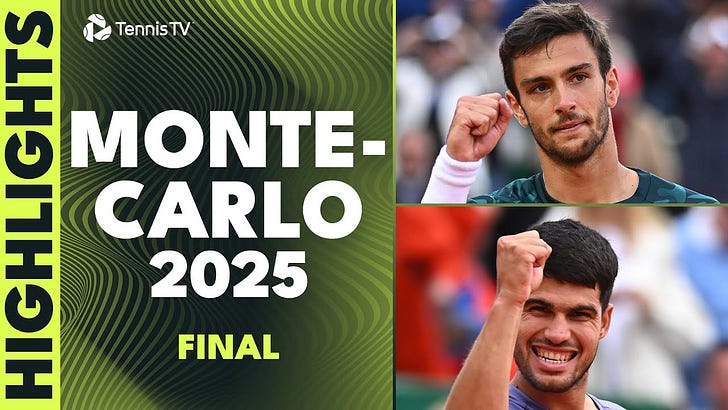


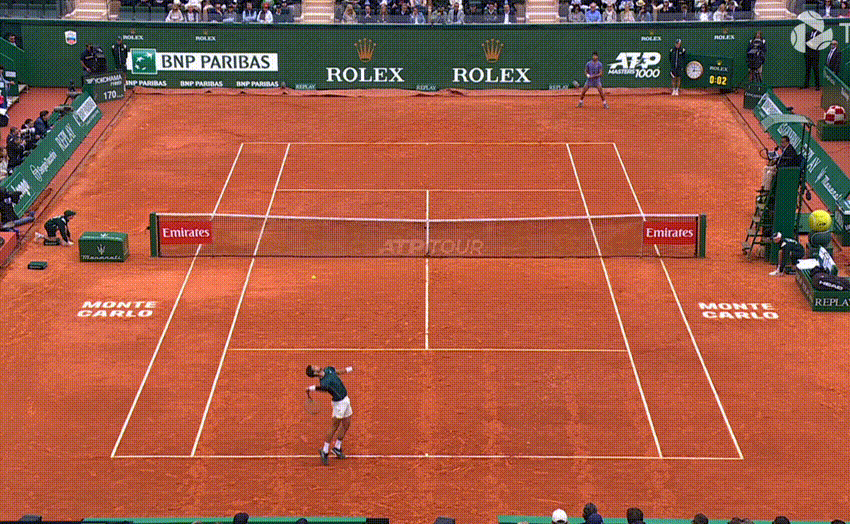

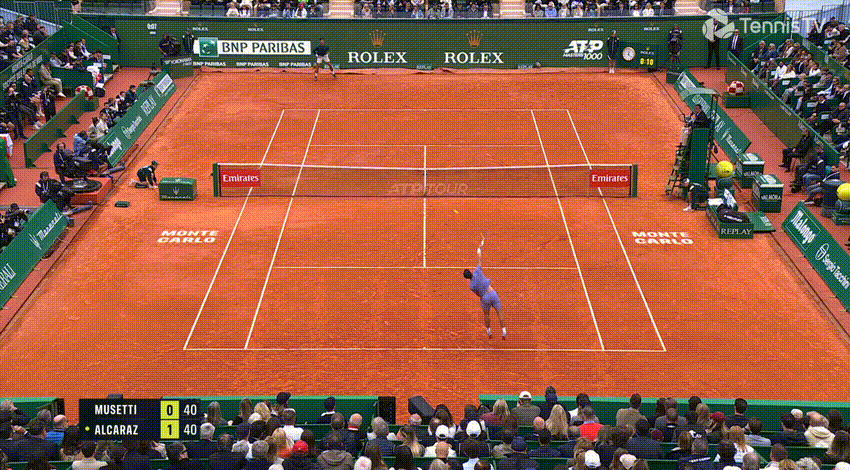
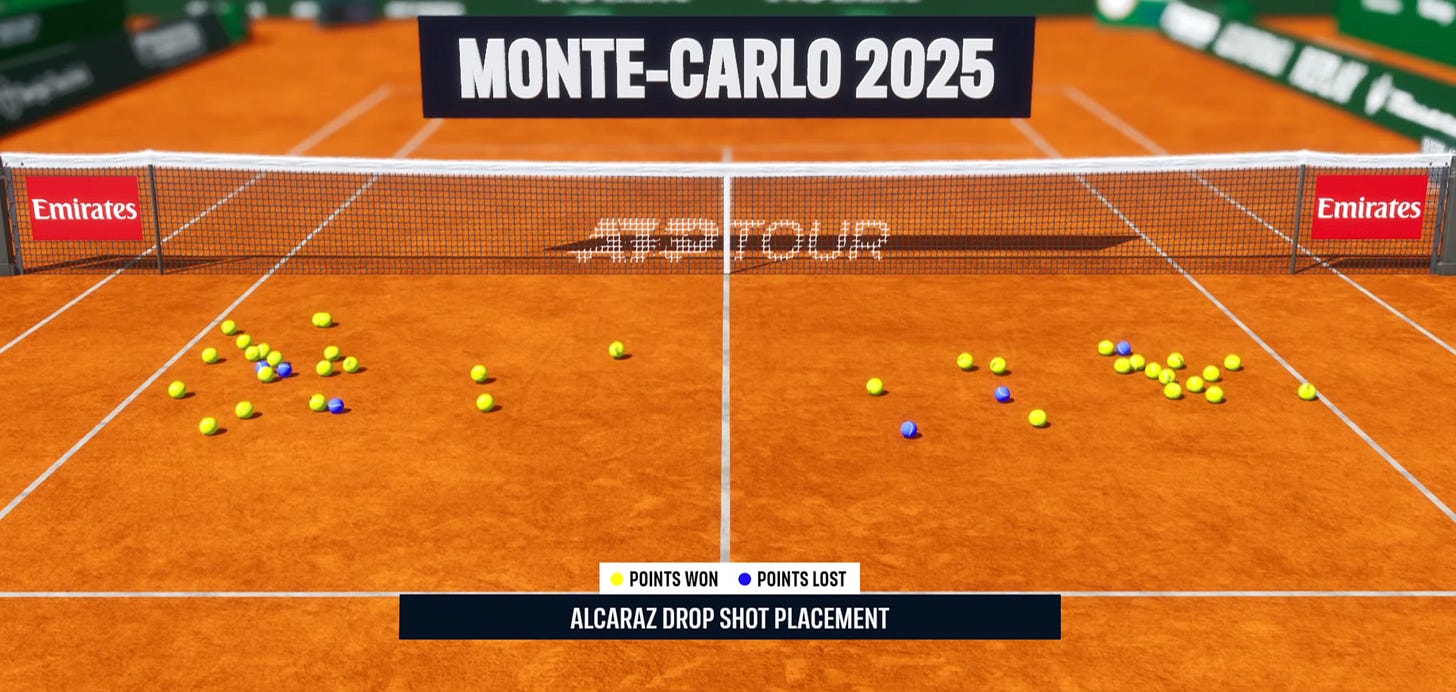



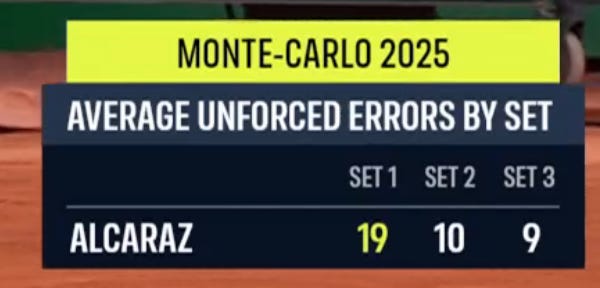


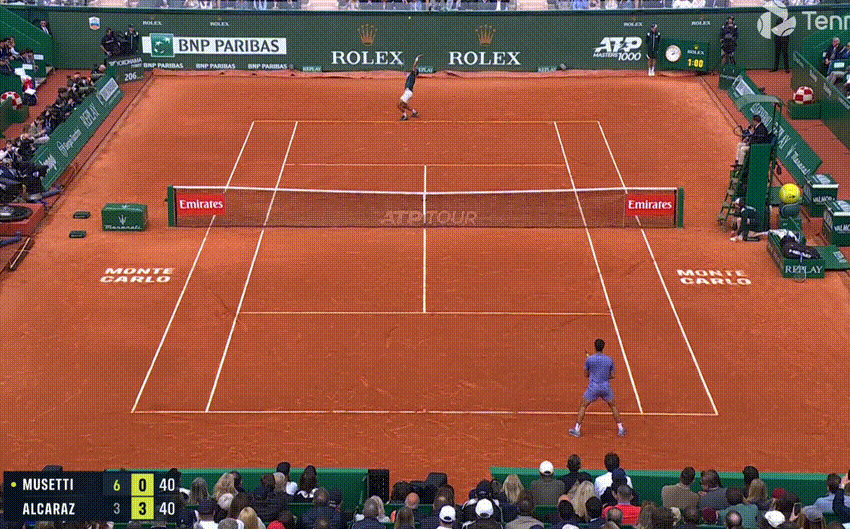

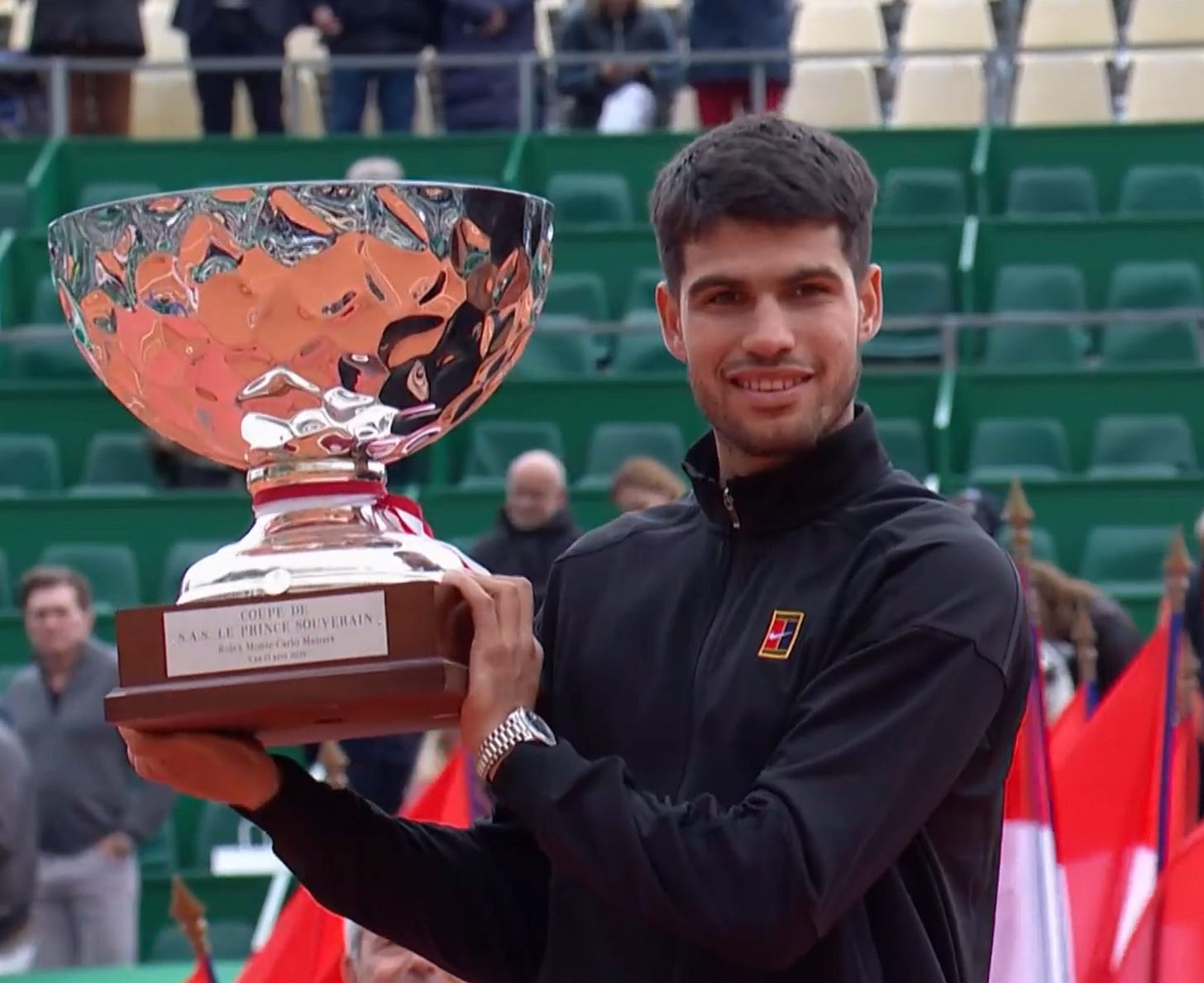
I really like your take on Musetti as an updated type Gasquet. They are very similar, I would say Gasquet has a better backhand, even though Musetti's is as good as any one hander out there now that Fed, Gasquet, and Wawrinka are either gone or close to. Musetti has a better forehand than Gasquet certainly. They both have great hands, all the shots, and both tend to retreat too deep behind the baseline.
I wonder how many of the, let's say, U15 elite tennis players are realizing that the next gen forehand isn't as good as an extended wrist